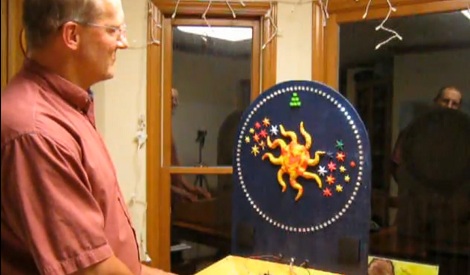[Tony] sent in a Nixie tube chess set he’s been working on, and we’re just floored with the quality of this build. The chess pieces glow without any visible wires, the board is extremely elegant with touches of gilding and brass, and extremely well designed using (mostly) materials and components contemporary to the old Russian Nixie tubes.
Instead of numeric Nixies, [Tony] chose IN-7 and IN-7A tubes originally made to display scientific symbols such as A, V, and ~. To power the these tubes, [Tony] used 64 air-core transformers underneath each square on the chess board, allowing these Nixie tubes to be powered just like an induction charger.
Even though his blog posts are a little thin on details, we’ve got to hand it to [Tony] for an amazing build. He says there will be a kit available that includes a gigantic PCB, but we wouldn’t hazard a guess as to how much that will cost.
You can check out a pair of videos of the Nixie chess set in action after the break.
















